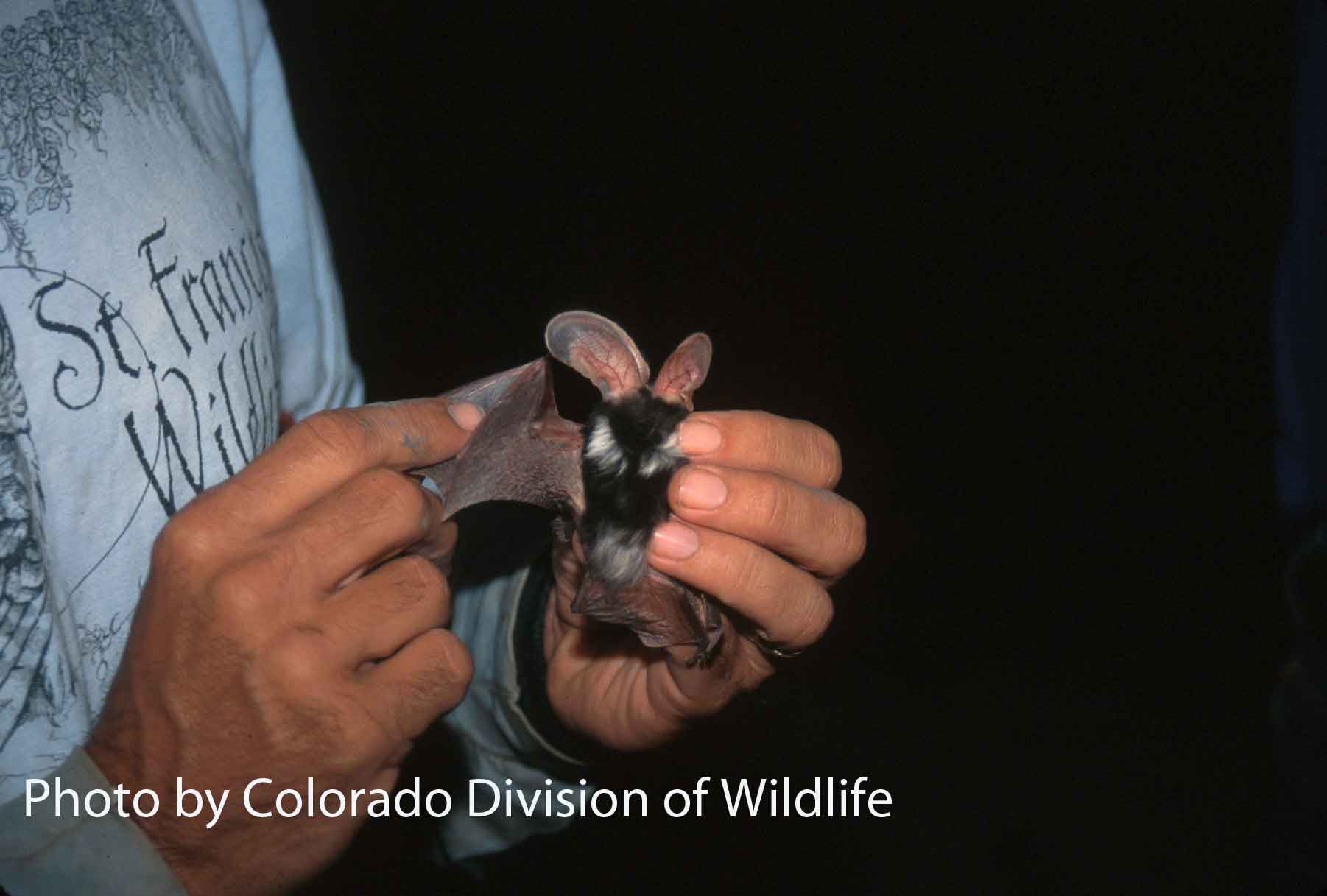Bats of Colorado > Spotted bat (Euderma maculatum)


Colorado's rarest bat is perhaps its most striking. The spotted bat has enormous pink ears and three large white spots on the black dorsal surface. Measurements of a Colorado specimen are: total length, 119 mm; length of forearm, 52 mm; weight, 13.5 g.
This species is known from scattered localities in western North America and apparently is one of the more difficult bats to capture, leading to a perception that this bat is rare in the United States. In Colorado, the spotted bat is known by published records from the vicinity of Dinosaur National Monument, and from a number of places at lower elevations on the Western Slope, including the Four Corners area where pregnant or lactating females have been captured. Further, acoustic records show that distribution of this species in Colorado is relatively widespread. Similarly, this species may be more widespread across the United States than previously thought.spotted bat by Jeremy Siemers
The spotted bat has been found in a variety of habitats, including ponderosa pine, piñon-juniper woodland and shrub desert. Early researchers suggested that this bat favored ponderosa pine forests, but more recent investigations suggest that the species may prefer areas with cliffs and water. The species appears mostly solitary, forming small nursery colonies or groups in hibernation. Little is known about hibernation or annual movement patterns, although they have been found in buildings in Nevada in September. Details of mortality are unknown, although known predators include kestrels and owls.
Little is known of the reproductive biology of this species. A single young is born, probably in late May or mid-June. One newborn weighed 4 g, 25 percent of the weight of its mother.
The preferred food of spotted bats is moths. Apparently only the abdomens are eaten as the spotted bat has been observed to remove and discard wings and heads of captured prey. Other food items include beetles, katydids and grasshoppers. Foraging occurs throughout the night, in open habitat, 5-10 m above the ground. The echolocatory calls are audible to humans.
This species may be found in the major canyons along the western border of the state and southeastern Colorado. Its unique appearance should enable correct identification. Any sighting of the spotted bat should be reported to the Colorado Division of Wildlife.
None





